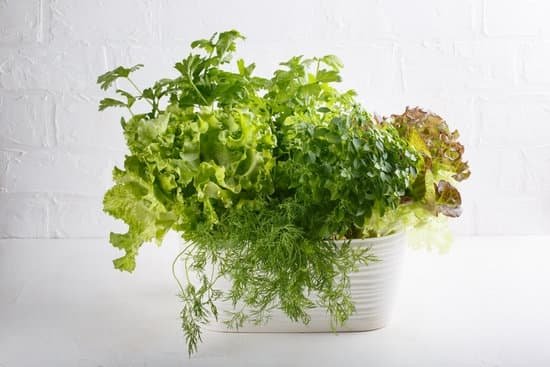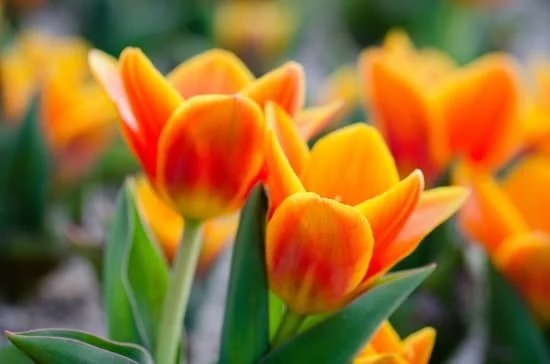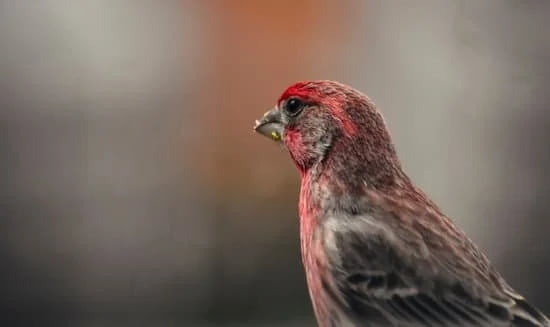Container gardening is a popular and convenient way for individuals with limited outdoor space to enjoy the beauty of plants and flowers. This article provides the best tips and ideas for successful container gardening, including choosing the right containers, selecting the perfect plants, soil and fertilizer tips, watering and drainage techniques, sunlight and location considerations, maintenance and care, as well as creative container gardening ideas.
Container gardening refers to the practice of growing plants in containers such as pots, hanging baskets, or window boxes, rather than directly in the ground. It has become increasingly important for individuals living in urban areas or small homes with limited outdoor space. Container gardening allows anyone to bring nature into their living environment by utilizing small spaces effectively.
One of the main benefits of container gardening is its versatility. It offers endless possibilities for design and placement that can be easily adjusted to suit individual needs and preferences. Whether you have a small balcony or a spacious patio, container gardening can be adapted to fit any space, creating a beautiful indoor or outdoor oasis.
Choosing the Right Containers
When starting a container garden, one of the most important decisions to make is choosing the right containers for your plants. The choice of containers can greatly impact the health and growth of your plants, so it’s essential to consider the different options available. Here are some tips for choosing the best containers for your container garden:
- Types of Containers:
- Pots: Ideal for individual plants or small arrangements.
- Hanging Baskets: Perfect for trailing plants and vertical gardening.
- Window Boxes: Great for creating a garden space on balconies or windowsills.
- Material Considerations:
- Plastic: Lightweight and affordable, but may not be as aesthetically pleasing.
- Ceramic: Durable and aesthetically pleasing, but may be heavier and more expensive.
- Terracotta: Breathable and traditional, but may dry out soil faster and can be prone to cracking in cold temperatures.
Choosing the right containers also depends on the specific needs of your plants. For example, certain types of plants may require larger containers with proper drainage, while others may thrive in hanging baskets that allow their vines to cascade down. Taking into account both aesthetic preferences and plant-specific requirements will ensure that you choose the best containers for your container garden.
Remember that successful container gardening starts with selecting the right containers for your specific needs. By considering factors like types of containers and material considerations, you can set yourself up for a bountiful and visually appealing container garden. With the right containers in place, you’ll be ready to move on to selecting the perfect plants for your unique garden space.
Selecting the Perfect Plants
Best Flowers and Herbs for Container Gardening
When it comes to container gardening, choosing the right plants is crucial for success. Some of the best flowers for container gardening include petunias, geraniums, and marigolds, which not only add a pop of color but also thrive in confined spaces.
In addition to flowers, herbs are great choices for container gardening due to their compact size and usefulness in the kitchen. Popular herbs such as basil, mint, and rosemary can easily be grown in pots or window boxes, providing fresh flavors for cooking while adding greenery to your outdoor space.
Considerations for Edible Plants and Vegetables
For those interested in growing their own food in a limited space, there are several edible plants and vegetables that are well-suited for container gardening. Tomatoes, peppers, and lettuce are popular choices for growing in containers and can thrive on patios or balconies with the proper care.
Additionally, berries such as strawberries can be grown in hanging baskets or small pots, making them a great option for gardeners with minimal space. When selecting edible plants for your container garden, be sure to consider the mature size of the plant and its specific requirements for sunlight and water.
As you consider which plants to include in your container garden, it’s important to take into account factors such as climate, available sunlight, and personal preferences. By choosing the right combination of flowers, herbs, and edible plants, you can create a thriving container garden that adds beauty and functionality to your outdoor living space.
Soil and Fertilizer Tips
When it comes to container gardening, choosing the right soil mix is crucial for the success of your plants. The best soil mix for container gardening is one that provides good drainage while retaining enough moisture for the plants to thrive. It’s recommended to use a high-quality potting mix that is specifically formulated for container plants. Avoid using garden soil as it may not provide adequate aeration and drainage, leading to root rot and other issues.
In addition to selecting the right soil, fertilizing container plants is essential for their overall health and productivity. It’s important to establish a fertilizing schedule based on the specific needs of the plants you are growing. Generally, a balanced liquid fertilizer can be applied every 2-4 weeks during the growing season to provide essential nutrients. Always follow the instructions on the fertilizer packaging and avoid over-fertilizing, which can lead to nutrient imbalances and damage to the plants.
Another tip for healthy container plants is to incorporate slow-release fertilizer granules into the soil at the beginning of the growing season. This will provide a consistent source of nutrients over time, reducing the need for frequent liquid fertilization. Additionally, organic fertilizers such as compost tea or fish emulsion can be used to supplement the feeding regimen and promote overall plant vitality.
Overall, proper soil selection and regular fertilization are key components of successful container gardening. By providing your plants with the right growing medium and essential nutrients, you’ll be well on your way to enjoying a thriving container garden.
Choosing the Right Soil Mix
Selecting a lightweight potting mix that promotes good drainage and aeration is essential for healthy container plants. Look for mixes labeled specifically for containers or raised beds, as they are designed to retain moisture while preventing compaction.
Fertilizing Schedule and Tips
Establishing a regular fertilizing schedule based on your plant’s specific needs is crucial for promoting strong growth and abundant blooms or harvests. Be sure to use a balanced liquid fertilizer at half strength to prevent chemical burns from occurring in your delicate container-grown plants.
Watering and Drainage Techniques
Proper watering and drainage are crucial for the success of any container garden. Without adequate drainage, plants can suffer from root rot and other moisture-related issues. It is essential to use containers with drainage holes to allow excess water to escape and avoid waterlogged soil.
When it comes to watering, the frequency and amount of water needed will vary depending on the type of plant, size of the container, and environmental conditions. As a general rule, it’s best to check the moisture level of the soil regularly before watering.
Stick your finger about an inch into the soil – if it feels dry, it’s time to water. On hot summer days, you may need to water your containers daily, while in cooler weather, they may only need watering every few days.
In addition to regular watering, using a high-quality potting mix that retains moisture while still providing good drainage is key. A mix containing peat moss, vermiculite, or perlite is ideal for most container plants. It’s also important to choose the right fertilizer for your specific plants and follow a proper fertilizing schedule to ensure they receive all the nutrients they need.
| Watering Tips | Drainage Techniques |
|---|---|
| Check soil moisture regularly before watering | Use containers with drainage holes |
| Water more frequently in hot weather | Select a potting mix that provides good drainage |
| Use a high-quality potting mix that retains moisture | Avoid overwatering by allowing excess water to drain out |
Sunlight and Location
When it comes to successful container gardening, proper sunlight and location are crucial factors in ensuring the health and growth of your plants. Different types of plants require varying levels of sunlight, so it is essential to understand the sunlight requirements of the specific plants you choose for your container garden.
For sun-loving plants such as tomatoes, peppers, and most herbs, it is best to place your containers in a location that receives at least 6-8 hours of direct sunlight per day. On the other hand, shade-loving plants like ferns, begonias, and certain types of lettuce thrive in areas with dappled or indirect sunlight.
In small spaces where outdoor sunlight may be limited, consider placing your containers near windows that receive optimal natural light. Additionally, utilizing reflective surfaces or light-colored walls can help maximize the available sunlight for your container garden.
Proper placement also involves considering the specific microclimates within your outdoor space. For example, certain areas may retain more heat or suffer from stronger winds. Understanding these microclimates will help you strategically position your containers for the best growing conditions.
| Types of Plants | Ideal Sunlight Requirements |
|---|---|
| Sun-loving plants (tomatoes, peppers) | 6-8 hours of direct sunlight per day |
| Shade-loving plants (ferns, begonias) | Dappled or indirect sunlight |
Overall, thoughtful consideration of both sunlight requirements and strategic placement will ensure that your container garden flourishes with healthy and vibrant plant growth.
Maintenance and Care
Maintaining and caring for container plants is essential for a successful container garden. Here are some tips and ideas to keep your plants healthy and thriving:
- Pruning: Regularly remove dead or yellowing leaves and spent flowers to promote new growth and maintain the overall health of your plants.
- Deadheading: For flowering plants, deadhead spent blooms to encourage more flowers to bloom throughout the season.
- Pest and Disease Management: Keep an eye out for common pests like aphids, mealybugs, and spider mites. If you notice any signs of pest infestation or disease, take appropriate measures to treat the issue before it spreads.
Proper maintenance and care can make all the difference in the success of your container garden. By following these best practices, you can enjoy a beautiful and thriving container garden throughout the growing season.
In addition to regular maintenance tasks, it’s also important to keep an eye on the overall health of your container plants. Look for signs of nutrient deficiencies, overwatering, or underwatering, and adjust your care routine as needed. With a little attention and care, your container garden will continue to delight you with its beauty and abundance.
Creative Container Gardening Ideas
Container gardening can be as much about creativity and innovation as it is about nurturing plants. With the right approach, you can transform your container garden into a unique and aesthetically pleasing display that enhances your living space. Here are some creative container gardening ideas to inspire you and take your gardening game to the next level.
One innovative technique for container gardening is vertical gardening. This involves using wall-mounted planters, trellises, or tiered shelving to maximize space and create an eye-catching display. Vertical gardening not only allows you to grow more plants in a small area but also adds visual interest to your outdoor or indoor space.
Another creative idea for container gardening is upcycling and repurposing containers. Instead of sticking to traditional pots and planters, think outside the box and consider using unconventional items such as old tires, wooden crates, mason jars, or even discarded furniture as containers for your plants. Not only does this add a unique touch to your garden, but it also promotes sustainability by giving new life to old items.
In addition, adding decorative elements such as fairy lights, wind chimes, or colorful ornaments can turn your container garden into a charming and inviting space. These personal touches can enhance the ambiance of your outdoor area and make it a cozy retreat where you can relax and enjoy the beauty of nature.
By incorporating these creative ideas into your container gardening endeavors, you can elevate the aesthetics of your living space while enjoying all the benefits of cultivating plants in a confined environment.
Conclusion
In conclusion, container gardening is a versatile and practical solution for individuals with limited space or those looking to add greenery to their homes. By choosing the right containers, selecting suitable plants, using the proper soil and fertilizer, watering and providing adequate sunlight, and implementing maintenance techniques, anyone can successfully create a beautiful container garden.
With the best tips and ideas for container gardening in mind, such as vertical gardening and upcycling containers for unique displays, even those with minimal gardening experience can enjoy the rewards of a thriving garden.
It’s important to remember that container gardening allows for creativity and flexibility in plant selection and design. Whether you’re interested in growing colorful flowers, fresh herbs, or your own vegetables, there are options to suit every preference and need. By understanding the principles of successful container gardening and making use of the best tips and ideas available, you’ll be well on your way to cultivating a flourishing garden in no time.
So why wait? With the knowledge gained from this article on the best tips and ideas for container gardening, it’s time to roll up your sleeves and start creating your own oasis in a pot. The possibilities are endless when it comes to container gardening – all that’s left is for you to get started. Happy planting.

Welcome to my gardening blog! I am passionate about plants and enjoy sharing my knowledge and experiences with others. In this blog, I will write about everything related to gardening, from tips on how to get started to updates on my own garden projects.





